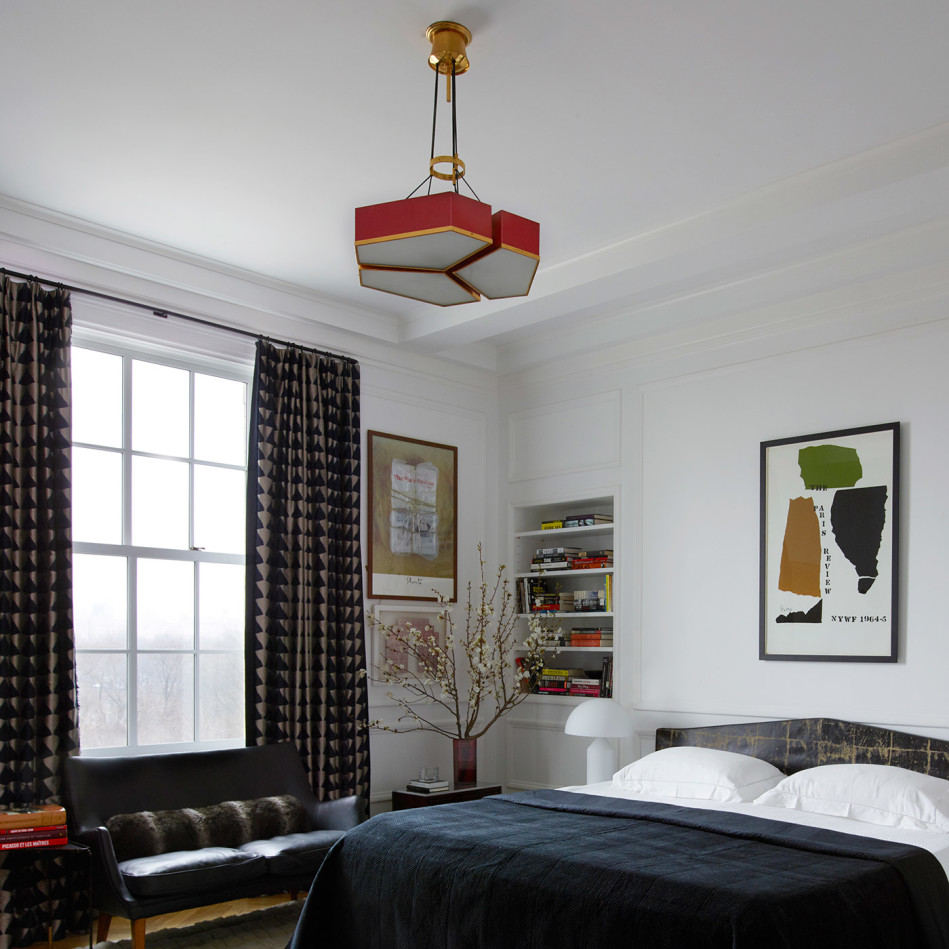The Biggest Mistake You Can Make When Decorating a Bedroom
Plus, expert advice for getting it right.

Interior Design: Fawn Galli | Photo: Costas Picadas
While there are some rooms in the house where form may outshine function, balance is imperative when it comes to the bedroom.
A 2017 survey found that Americans spend an average of 9.5 hours each day actively engaged in personal care of some kind, including sleep. Paying mind to the place where that self-care is likely to happen—the bedroom—means making some thoughtful decisions about the room's décor, and avoiding what designers say may be the single biggest decorating pitfall you can make in this space: not installing enough lighting.
"Lighting is usually an overlooked or poorly handled design element in decorating bedrooms," says Decorist designer Martin Raffone. "Often, people rely on a single light in the center of the bedroom ceiling to illuminate the space, which usually produces harsh and unflattering light."

Interior Design: Fawn Galli | Photo: Richard Powers
But simply adding more fixtures isn't enough to create the kind of space designer Fawn Galli says you should think of as a place of introspection and reflection. The type of lighting you bring in will be key.
Ambient light is the kind of even, overall illumination you get from fixtures such as chandeliers, recessed fixtures and sconces, while the more concentrated light of table and floor lamps create the perfect setting to perform tasks like reading (hence the name task lighting).

Interior Design: Fawn Galli | Photo: Jonny Valiant
The third type, accent lighting, does double duty, showcasing objects such as art and bookcases, and creating a mood.

Interior Design: Fawn Galli | Photo: Richard Powers
"The golden rule is to have five heights or levels of light to create a beautiful soft glow but also much-needed light for reading and dressing," Galli recommends.
Decorist designer Lauren Evans likes to think of this multisource approach as layers: "Bedrooms deserve layered lighting just as much as larger common areas," she says. "Every bedroom should have some sort of integrated ceiling lighting on a dimmer for any and all tasks ... or overall bright light for those moments when you want to see what's in your drawers, what you are packing or organizing." Evans then layers in side table lamps or ceiling pendants hung just above the nightstands for more subtle ambiance when the ceiling lighting isn't needed. "This combo of [ambient and task] lighting is practical and adds to the sanctuary that a bedroom should be," she says.

Interior Design: Fawn Galli | Photo: Richard Powers
Once you've landed on the right mix of fixtures (there's no need to match either, if you're into a more eclectic vibe) focus on the intensity of the light each one is giving off. A dimmer switch will offer the greatest range, but if that isn't an option, Galli recommends a 40-watt bulb or equivalent LED.



